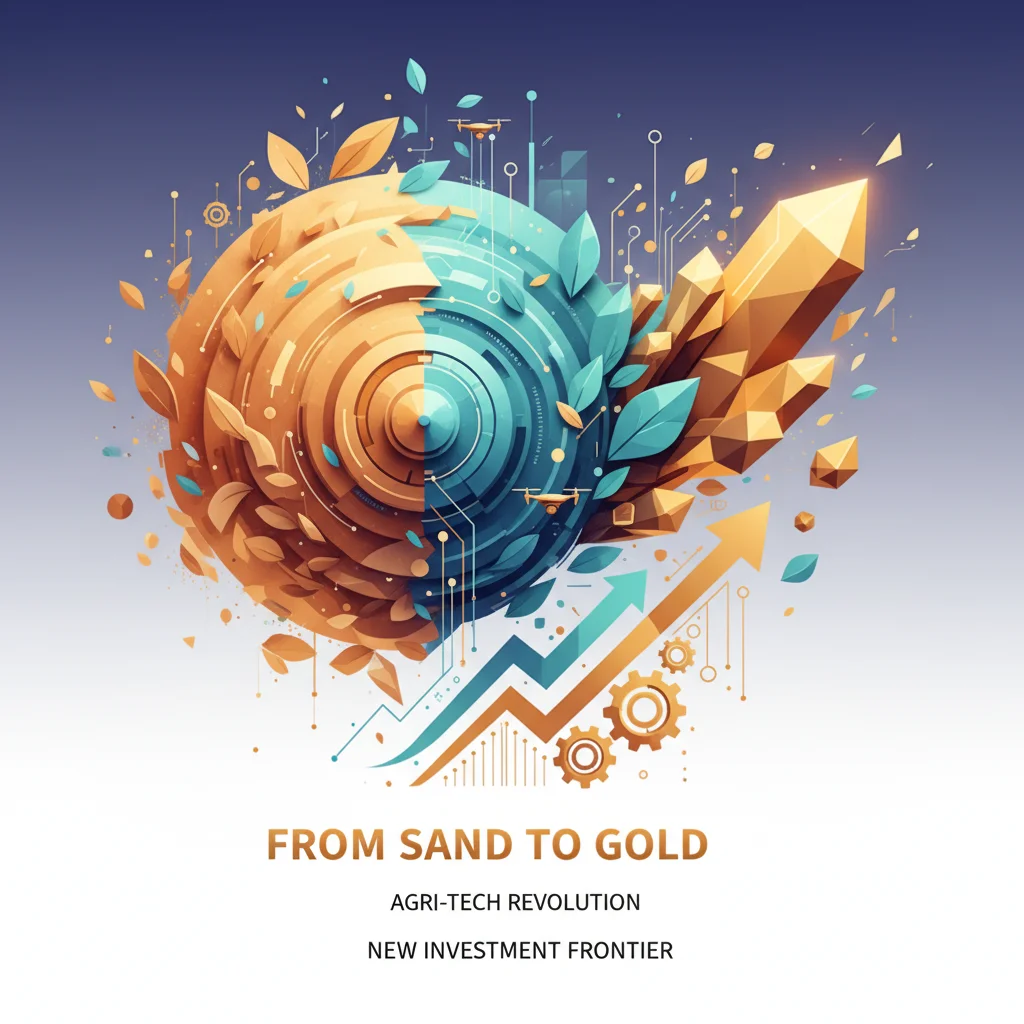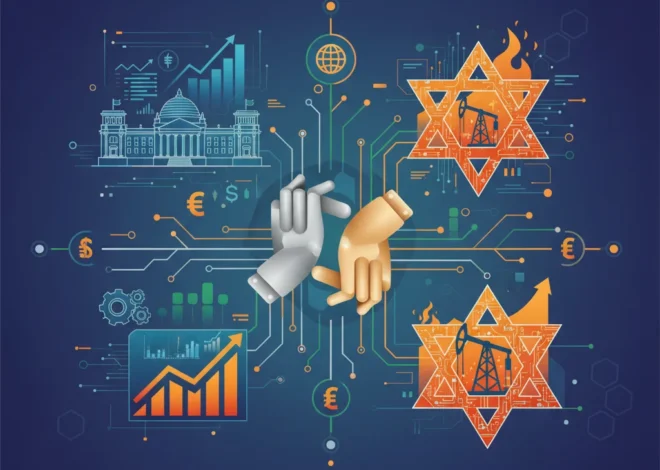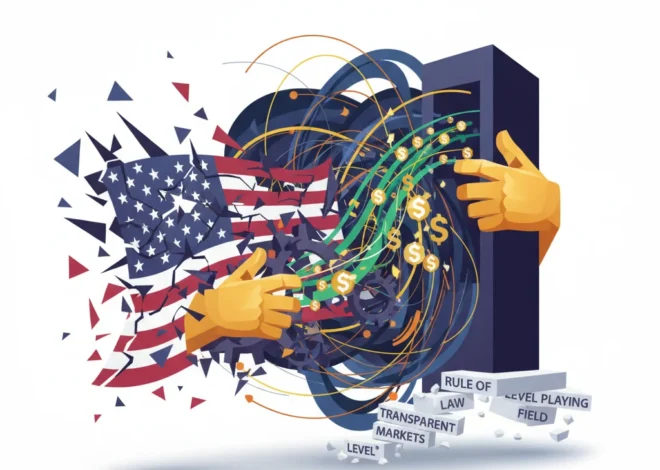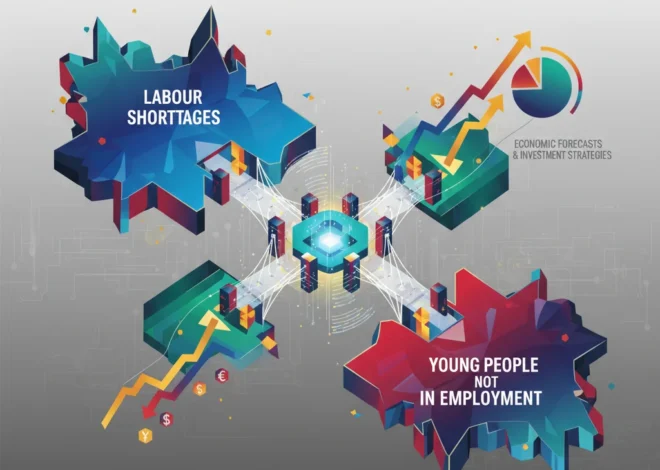
From Sand to Gold: The Agri-Tech Revolution and the New Investment Frontier
The Unseen Bull Market: Why the Next Big Investment Isn’t on the Stock Market
In the relentless pursuit of alpha, investors, finance professionals, and business leaders often fixate on the familiar tickers scrolling across their screens. We analyze quarterly earnings from tech giants, debate the Federal Reserve’s next move, and dissect the intricacies of the stock market. But what if the next revolutionary investment—one with the potential to reshape economies and generate substantial returns—isn’t found in a Silicon Valley garage, but in a sterile laboratory in the heart of the desert?
A groundbreaking development is taking place in the United Arab Emirates, where a bioscience firm is pioneering a method to, quite literally, make the desert bloom. This isn’t just a story about agriculture; it’s a profound case study in innovation, economic diversification, and the emergence of a new asset class that savvy investors should be watching closely. As we explore this venture, we’ll connect the dots between plant biology, global economics, and the sophisticated financial technology that will underpin its growth, revealing a fertile ground for future investing.
The Genesis of Growth: A Bioscience Revolution in the Sand
At the heart of this transformation is Atariq, a bioscience firm that has rapidly positioned itself as a world leader in the tissue culture of date palms. The company recently opened a new, state-of-the-art laboratory with the capacity to produce up to 100,000 “elite” date plants a year. This isn’t traditional farming; it’s high-tech horticulture at an industrial scale.
The process, known as micropropagation, involves taking a small piece of plant tissue and growing it in a nutrient-rich, sterile environment. This technique allows for the rapid cloning of plants with desirable traits—such as high yields, disease resistance, and superior fruit quality. For an arid region looking to bolster its food security and create new export markets, the implications are monumental. Dr. Ghaleb Alhadrami, the UAE University vice-chancellor, noted that this technology is crucial for achieving sustainability and food security, which is a key strategic goal for the nation (source).
By producing genetically identical, disease-free plants, the lab provides a reliable and predictable foundation for a modern agricultural industry. This de-risks the initial stages of farming, a factor that is critically important from both a business and an investing perspective. It transforms farming from a game of chance against nature into a predictable, scalable manufacturing process.
Beyond the Ticker: Unpacking the Investment Potential of Agri-Tech
For too long, agriculture has been viewed by the mainstream finance community as a low-margin, high-risk sector. However, the fusion of biology and technology (Agri-Tech) is changing that paradigm. Ventures like Atariq represent a new frontier in investing, sitting at the intersection of deep tech, sustainability, and essential goods.
This falls squarely into the domain of ESG (Environmental, Social, and Governance) investing, a trend that continues to gain momentum. These operations contribute to food security (Social), utilize technology to promote sustainable land use (Environmental), and represent innovative corporate structures (Governance). For investors looking to align their capital with positive global impact, Agri-Tech offers a compelling narrative backed by tangible outcomes.
Let’s compare this emerging asset class to more traditional investment vehicles:
| Investment Vehicle | Risk Profile | Growth Potential | Correlation to Stock Market | Key Drivers |
|---|---|---|---|---|
| Blue-Chip Stocks | Moderate | Stable/Moderate | High | Broad economy, corporate earnings |
| Government Bonds | Low | Low | Low/Inverse | Interest rates, inflation |
| Venture Capital (Tech) | Very High | Very High | Moderate | Disruptive technology, market adoption |
| Agri-Tech Ventures | High | Very High | Low | Food security needs, climate change, tech breakthroughs |
As the table illustrates, Agri-Tech offers a unique profile: high growth potential similar to venture capital, but driven by fundamental human needs rather than consumer trends. Its low correlation to the general stock market makes it an excellent tool for portfolio diversification, providing a hedge against volatility in other sectors of the economy.
The Gatekeeper's Gambit: Inside the £32M Lawsuit That Could Shake the Foundations of Fintech
The Macroeconomic Harvest: How One Lab Can Reshape an Economy
The impact of this single facility extends far beyond its four walls, sending ripples through the entire economy. For a nation like the UAE, historically dependent on oil and gas revenues, developing a world-class, non-oil export industry is a masterclass in strategic economic diversification. This isn’t just about growing dates; it’s about cultivating a new pillar of the national economy.
This initiative directly addresses several key economic principles:
- Import Substitution: By bolstering domestic production, the country can reduce its reliance on imported food, strengthening its balance of payments and insulating itself from global supply chain shocks.
- Export Creation: The production of “elite” date varieties opens up lucrative export markets for premium agricultural products, bringing in foreign currency.
- Job Creation: This new industry creates high-skilled jobs in bioscience, logistics, and management, alongside traditional agricultural roles.
The financial ecosystem required to support this growth is substantial. It necessitates sophisticated banking services for capital-intensive farm setups, trade finance solutions for managing international sales, and eventually, could lead to new listings on the local stock market as these enterprises mature and seek public capital.
Europe's Crossroads: How Political Tides and Carbon Taxes Are Redefining the Investment Landscape
The Digital Scaffolding: Financial Technology’s Role in Scaling a Green Revolution
For this green revolution to achieve its full potential, it must be built on a modern digital and financial framework. Financial technology is not just an accessory; it is the essential scaffolding that will enable scalability, efficiency, and transparency across the entire value chain.
The founder of the lab, Adamir, has already expanded the business into landscaping, supplying over 25 million plants for projects across the region. This level of scale is impossible without robust financial systems. Here’s how fintech is poised to play a pivotal role:
Below is a breakdown of potential fintech applications in this specific Agri-Tech value chain:
| Value Chain Stage | Fintech Application | Impact on the Business |
|---|---|---|
| Plant Production & Sales | Digital Invoicing & Supply Chain Finance | Optimizes cash flow for both the lab and the farms buying the plants, enabling faster growth. |
| Farm Management | IoT-linked Parametric Insurance | Automated insurance payouts based on sensor data (e.g., water levels, temperature), reducing risk for farmers. |
| Harvest & Distribution | Blockchain-based Traceability | Creates a transparent record from lab to consumer, verifying authenticity and quality for premium export markets. |
| Global Trading | AI-powered Commodity Trading Platforms | Analyzes yield data, climate patterns, and market demand to provide predictive analytics for pricing and trading. |
A Prudent Portfolio: Analyzing the Risks in Desert Blooms
No discussion of investing is complete without a sober assessment of the risks. While the potential is immense, business leaders and finance professionals must approach this sector with careful due diligence. The primary risks include:
- Biological & Environmental Risks: Despite lab controls, large-scale monocultures are susceptible to new pests or diseases. Climate change could also introduce unforeseen weather patterns that impact cultivation.
- Market & Price Volatility: The price of premium dates, like any commodity, can fluctuate based on global supply and demand. An oversupply could depress prices and impact profitability.
- Execution & Scalability Risk: Transitioning from a lab to a massive, multi-national agricultural operation is a significant logistical and managerial challenge. Scaling too quickly without the right infrastructure could lead to failure.
- Regulatory & Geopolitical Risk: Changes in trade policies, water rights, or regional stability could impact operations and market access.
A successful investment strategy in this space requires deep domain expertise, a long-term horizon, and a portfolio approach that spreads capital across several projects to mitigate company-specific risk.
Blackstone's Big Bet: Why the Titan of Finance is Eyeing the Humble Self-Storage Unit
Conclusion: The Future is Fertile for Innovative Investing
The story of a date lab in the desert is a powerful metaphor for the future of the global economy and the landscape of modern investing. It demonstrates a shift away from purely digital or traditional industrial assets towards ventures that solve fundamental human problems with cutting-edge technology. This is where biology, finance, and data converge to create immense value.
For investors, the key takeaway is the need to look beyond the noise of the daily stock market and identify the powerful, secular trends that will shape the next decade. Food security, climate adaptation, and sustainable technology are not fleeting trends; they are foundational pillars of our future economy. By understanding the intricate connections between a bioscience lab, the banking systems that fund it, and the financial technology that scales it, we can begin to see the outline of the next great investment frontier—one that is as promising and fertile as a desert turned green.


